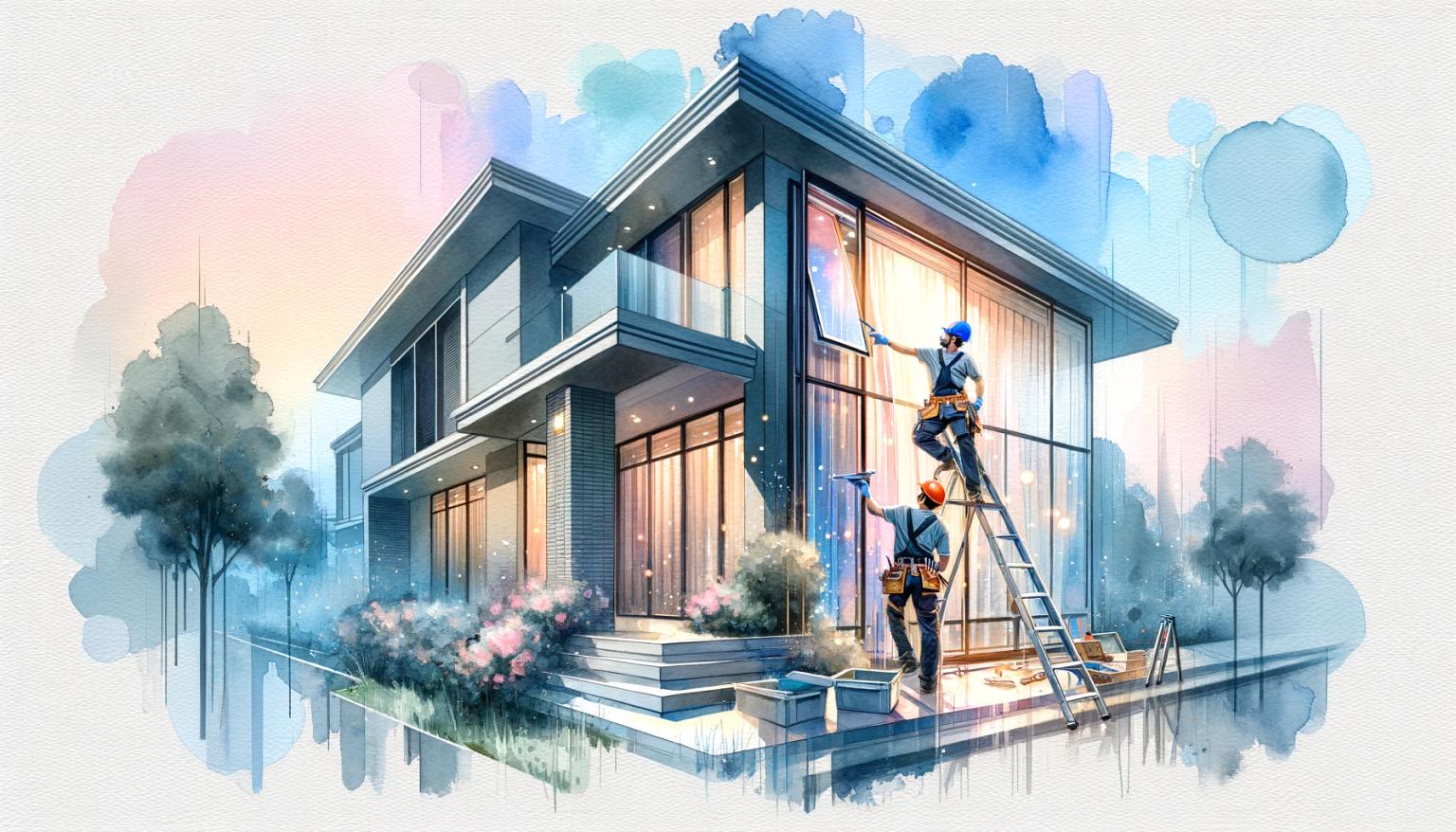- What Is Title 24?
- Is Title 24 Compliance Required For New & Existing Homes?
- Why Does Title 24 Apply To Windows & Doors?
- What Are California's Title 24 Requirements For Window & Door Installations?
- What Are Window & Door Inspection Requirements Under Title 24?
- What Is U-Factor?
- What Is Solar Heat Gain Coefficients (SHGC)?
- Where To Find U-factor & SHGC Ratings Of Manufactured Fenestration Products?
- Why Is Title 24 Important?
- What Are The Benefits Of Title 24 Compliance For Homeowners?
- Why Are Title 24 Regulations Updated So Often?
- Why Do Title 24 Standards Vary By Climate Zone?
- What Types Of Windows Are Most Energy-Efficient?
- What Types Of Frame Materials & Insulation Are Most Energy-Efficient?
- What Other Factors Affect Window Energy Performance?
- What Factors Beside U-factor & SHGC Ratings Affect Title 24 Energy Efficiency Credit?
- What Are The 3 Types Of Title 24 Energy Standards For Fenestration?
What Is Title 24?
Title 24 is part of the California Code of Regulations, which sets building energy efficiency standards. These standards aim to reduce energy usage, decrease utility costs, preserve environmental quality, and minimize climate impact.
Title 24 criteria measure a building's overall energy efficiency, and its codes apply to almost all aspects of a structure, from windows and doors to lights and appliances to electrical and mechanical systems.
The California Energy Commission (CEC) is responsible for adopting, implementing, and updating Title 24 energy efficiency benchmarks. Local city and county agencies have the authority to verify and enforce compliance with these standards.
Is Title 24 Compliance Required For New & Existing Homes?
Title 24 regulations affect the construction of new residential and non-residential buildings, as well as additions and alterations to existing structures. Compliance is mandatory for all new residential homes and remodels of existing buildings, without exception (unless owners opt in for a more comprehensive and expensive "envelope upgrade").
Why Does Title 24 Apply To Windows & Doors?
Windows, doors, and skylights (collectively called "fenestration") greatly impact a building's energy use. They can account for up to 50% of heating and air conditioning costs. The size, orientation, shading, and glazing type of fenestration significantly influence overall energy usage. Title 24 regulations affecting doors and windows include requirements for high-performance fenestration products to ensure they reduce energy consumption.
What Are California's Title 24 Requirements For Window & Door Installations?
California Title 24, Part 6 requires all new residential buildings to achieve Net-Zero Energy (NZE) levels by 2020 and commercial buildings by 2030. The standard requires all new and replacement windows, skylights, and doors with 25% or more glass surface area to meet certain energy specifications:
- New windows must be dual-glazed and meet the Low-E2 standard.
- In most climate zones, residential windows and doors must have a U-factor of 0.30 and a SHGC (Solar Heat Gain Coefficient) of 0.23. The maximum U-factor for doors with less than 25% glazing is 0.20.
- Exception: Replacement windows with an aggregate area of less than 75 square feet may have a maximum U-factor of .40 and an SHGC factor of .35 or less. Doors must be solid-core exterior-grade doors.
- Vertical fenestration in commercial buildings must have a maximum U-factor of 0.36 for fixed windows, 0.46 for operable windows, 0.41 for curtain walls or storefronts, and 0.45 for glazed doors.
What Are Window & Door Inspection Requirements Under Title 24?
The manufacturer's U-factor (the rate of heat loss) and Solar Heat Gain Coefficient (SHGC) values are performance ratings shown on the NFRC label attached to new windows. The building inspector must see these labels during the final inspection to ensure the windows meet state requirements. During the inspection, the actual fenestration U-factor and SHGC values must equal or lower overall energy consumption than those indicated in the compliance documents.
What Is U-Factor?
The U-factor measures how well a fenestration product prevents heat from escaping a building. The lower the U-factor, the better a product keeps heat inside the building. Window U-factor ratings generally range between 0.15 and 1.20.
What Is Solar Heat Gain Coefficients (SHGC)?
Solar Heat Gain Coefficient measures how well a product blocks heat from the sun. The lower the SHGC, the better a product is at blocking unwanted heat gain inside the house. SHGC values typically range from 0.25 to 0.80.
Where To Find U-factor & SHGC Ratings Of Manufactured Fenestration Products?
Title 24 requires determining the U-factor and SHGC of fenestration products from NFRC's Certified Product Directory or the California Energy Commission-approved default tables.
The NFRC website has a directory of NFRC-certified ratings. Title 24 residential compliance manual's Standards Table 110.6-A contains the CEC default U-factors, and Standards Table 110.6-B contains the default SHGC values.
The CEC default values fall on the lower side of the window performance range. To get credit for advanced window features such as Low-E (low-emissivity) coatings and thermal break frames, the manufacturer must test, label, and certify the window according to NFRC procedures.
Most fenestration manufacturers have pre-established U-factors and SHGCs for their product lines to comply with Title 24 regulations. Although U-factors and SHGCs vary by manufacturer and material, homeowners can have more design flexibility to meet the minimum requirements by adding thicker double panes and Low-E glass.
Why Is Title 24 Important?
California's Building Energy Efficiency Standards outline the energy efficiency requirements for newly constructed buildings and additions and alterations to existing structures. Energy efficiency reduces energy costs and wasteful consumption, improves building comfort, and reduces the environmental impacts of energy use. The Standards ensure that builders use energy-efficient technologies and practices that are cost-effective for building owners.
Energy standards are essential to California's future because efficient usage reduces homeowners' costs and impacts the environment. The newest energy code requires submitting a Title 24 energy report (also called Title 24 energy calculations) before a city or county grants a building permit to verify that a building's design complies with Title 24.
What Are The Benefits Of Title 24 Compliance For Homeowners?
Increased energy efficiency reduces homeowner energy costs, increases electricity reliability and availability, improves building occupant comfort, and reduces the overall environmental impact. These standards are essential for introducing sustainable technologies for California's energy future (and for passing building inspection); thus, it is in every homeowner's best interest to comply with them.
Blocking solar heat gain is important during the summer season in warmer climates. By contrast, homeowners in cooler climates desire solar heat gain during the cold months to lessen the cost of heating the home.
Why Are Title 24 Regulations Updated So Often?
The California Energy Commission is required by law to adopt new standards every three years. The requirements are updated to incorporate new energy-efficient technologies and cost-effective construction methods for owners over a building's 30-year lifespan.
These criteria are updated regularly to ensure that new and renovated buildings meet current efficiency benchmarks, which save energy, increase electricity supply reliability, improve indoor comfort, avoid the need to construct new power sources, help preserve the environment, and reduce costs for Californians.
Why Do Title 24 Standards Vary By Climate Zone?
California has 16 climate zones, and standards that are practical in warm regions are less effective in cooler areas. Requiring measures by climate zone ensures that buildings have the most energy-efficient features for that location.
What Types Of Windows Are Most Energy-Efficient?
Fixed or picture windows are the most energy-efficient options. They feature non-operable sashes that are fully sealed to the window frame, preventing air infiltration and providing exceptional energy efficiency. Hinged-sash windows like casement and awning windows also offer excellent energy efficiency due to their tight seals when closed.
Most aluminum windows and patio doors on the market do not comply with Title 24 standards because aluminum is a metal and does not make a perfect insulator. If an aluminum finish is a must, an aluminum-clad line of products is a viable option.
What Types Of Frame Materials & Insulation Are Most Energy-Efficient?
The choice of window frame material significantly impacts energy efficiency. Vinyl is the top performer in terms of energy efficiency because it offers superior insulation to fiberglass and metal frames and resists the warping and deterioration commonly seen in wood frames. Vinyl windows feature high R-values, reducing heat transfer and maintaining comfortable indoor temperatures year-round.
What Other Factors Affect Window Energy Performance?
For windows with NFRC ratings, several features that impact energy efficiency are accounted for in U-factor and SHGC ratings, including:
Frame Materials, Design & Configuration
Fenestration is usually framed in wood, aluminum, vinyl, or composites of these. Wood and vinyl are better insulators than metal. Some aluminum-framed units have thermal breaks that reduce the conductive heat transfer through the framing element compared with similar units that do not have such thermal barriers.
Number Of Panes Of Glazing, Coatings & Fill Gases
Dual-glazing offers opportunities for improving performance beyond the dimension of the air space between panes. For example, unique materials that reduce the emissivity of the surfaces facing the air space, including low-e or other coatings, improve the thermal performance of fenestration products. Fill gases other than dry air, such as carbon dioxide, argon, or krypton, also enhance thermal performance.
Other Factors
- Gap width (the distance between panes)
- Window type (casement, double hung, etc)
- Spacer material (the type of material separating multiple panes of glass)
What Factors Beside U-factor & SHGC Ratings Affect Title 24 Energy Efficiency Credit?
Shading of windows is a vital compliance option. Shading devices that offer credit are those that are a part of the building design. For these, the designer and the builder have control over the measures and can assure that they will be constructed correctly and perform adequately. Overhangs or sidefins attached to the building or shading from the building itself are compliance options for which credit is offered through the performance approach.
Non-credit devices are those the designer has little or no control over, such as the height of a neighboring house or tree. Landscaping features can increase comfort but cannot be used for compliance credit. For example, no credit is offered for shading from trees, adjacent structures, or terrain features.
Windows facing south can be shaded by overhangs positioned above the window. The ideal overhang provides shade when the building is likely to be in an air-conditioning mode and allows direct solar gains in the heating months. This can be achieved because, during the summer, the sun is high as it passes over the south side, while in the winter, it is low, enabling solar radiation to pass beneath the overhang. Due to the potential effectiveness of south-facing overhangs, a prescriptive compliance option is offered.
Shading is considerably more difficult on a house's east and west sides. When the sun strikes these facades, it is relatively low in the sky, making overhangs ineffective. Vertical fins may be effective, but they degrade the quality of the view and limit the amount of natural light that can enter. In cooler climates, the best approach is to minimize windows that face east and west.
What Are The 3 Types Of Title 24 Energy Standards For Fenestration?
Manufactured Windows, Glass Doors & Skylights
Manufactured windows, glass doors, and skylights are made of factory-cut or otherwise factory-formed materials to fabricate a fenestration product. These products are typically factory-assembled before delivery to a job site. They are the most common type of fenestration in residential construction.
Site-Built
Site-built fenestration is designed to be field-glazed or assembled in the field using specific factory-cut or otherwise factory-formed framing and glazing units. These are more common in non-residential construction. The glazing contractor may also pre-assemble site-built fenestration at the shop before final installation. Examples of site-built fenestration include storefront systems, curtain walls, and atrium roof systems.
Field-Fabricated
Field-fabricated products are built on-site using standard dimensional lumber or other materials not intentionally prepared for use as a fenestration product.


